Despite a strong 16-7-3 run since Sheldon Keefe took over behind the bench on Nov. 21, the Toronto Maple Leafs remain exactly where they started when Mike Babcock was let go: 10th in the Eastern Conference, and on the outside looking in. While the team has certainly performed well on the ice – and most of the numbers support that – it’s clear that they still have more to give. And if they intend to make the playoffs, they’ll have to do exactly that.
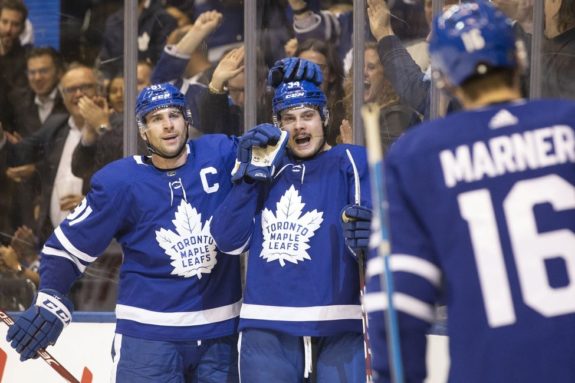
As it currently stands, the second wild-card spot is held by the Carolina Hurricanes who are on pace for 98 points. That means that Toronto will likely have to amass at least 41 points over their final 33 games – a record of 20-12-1 or thereabouts. That’s definitely doable considering they’ve actually outperformed that pace under Keefe, but they’ve shown enough chinks in their armour over the past couple of weeks to make you at least question the likelihood of that hot streak continuing.
Perhaps the biggest chink has been goaltending, with Frederik Andersen posting a save percentage of .895 since the start of December (that’s worse than Michael Hutchinson’s .903 over that span!). What started as an issue of finding a suitable backup has evolved into an all-out disaster in net for the Maple Leafs, who have now got more questions than answers between the pipes.
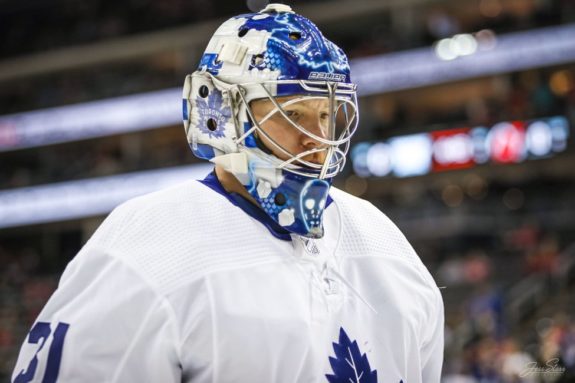
Luckily for Toronto, the trade deadline is quickly approaching, with plenty of intriguing names – and potential answers – on the market. What can general manager Kyle Dubas do to spark his club?
The Case For (And Against) an Early Trade
It’s nearly a year to the day that the Maple Leafs acquired sturdy defenceman Jake Muzzin from the Los Angeles Kings in exchange for a first-round pick plus prospects Carl Grundstrom and Sean Durzi. The Jan. 28 trade was an unconventional move by Dubas, who made the move exactly four weeks before the trade deadline on Feb. 25.
With this season’s Feb. 24 deadline approaching, you’ve got to wonder if Dubas won’t pull the trigger sooner rather than later. After all, he already knows the weaknesses that need to be addressed and with his team in the thick of the playoff race, he’ll want to patch things up as quickly as possible. There’s something to be said for comfort and chemistry too: it takes time for people to adjust to new settings, so an early trade would allow for incoming players to get better acquainted with their new team before the playoffs. We know that players like Muzzin and Tyson Barrie took a while to really find their footing in Toronto, so it’s a factor that should be considered.
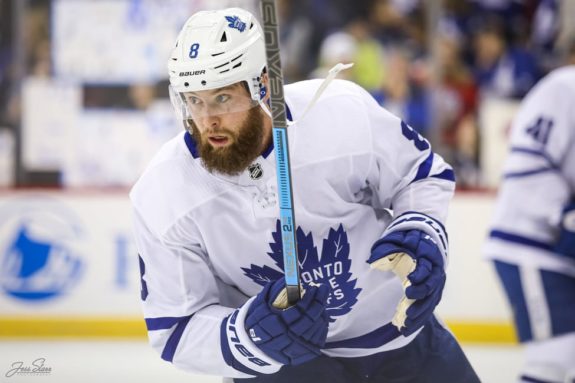
On the flip side, you’ve also got to deal with a dynamic trade market. How desperate are teams to get rid of their players, and how does an impending deadline influence prices? You’ve got to assume that the closer you get to the deadline, the lower prices will get as sellers look to offload their unneeded assets. Obviously, though, it’s a case-by-case basis.
The final consideration for any trade will be the salary cap. While you never want injuries to key players, having significant cap hits in Muzzin and Morgan Rielly currently on Long-Term Injured Reserve frees up a bit of money for Toronto. According to Cap Friendly, they’ve got nearly $7.6 million in cap space, at least until Muzzin’s imminent return. That kind of flexibility will be useful if they want to make a splash.
Target No. 1: Alexandar Georgiev
The name that’s been connected most with the Maple Leafs is that of New York Rangers goaltender Alexandar Georgiev, and for good reason. He ticks off basically every box that Toronto needs: he’s a solid backup (.913 save percentage this season), is capable of filling in for long stretches (33 games last season and on pace for 38 this season), and is a viable option for the future (he’s 23 and is a restricted free agent this summer). Perfect fit, right?
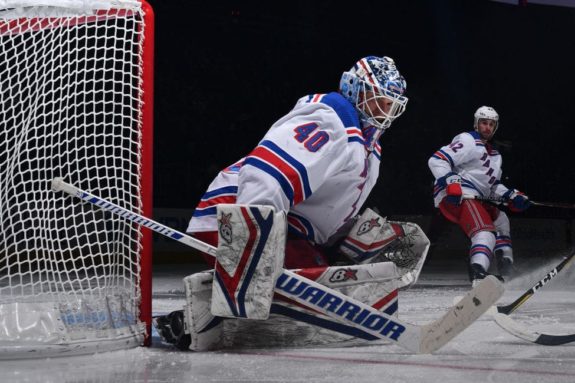
The only issue for Toronto is the asking price with reports that the Rangers are seeking a young, NHL-ready player in return. In Toronto’s case, that likely means parting with either Andreas Johnsson or Kasperi Kapanen, who are both 20-goal, 40-point wingers with arguably even more upside. Yeah, the Maple Leafs are stacked on the wings, but these kinds of players don’t grow on trees, and if you’re going to move one of them you might as well go big-game (or top-pair defenceman) hunting instead. With just 65 games of NHL experience under his belt, Georgiev is not enough of a proven commodity to justify that price tag.
While Georgiev would likely excel in Toronto, the ask is simply too high right now for a backup goaltender. If he is the Maple Leafs’ main target, they may be better off waiting (hoping, wishing) for the price to drop as we get closer to the deadline.
Target No. 2: Robin Lehner
One name that hasn’t really been discussed much in terms of trade bait is Chicago Blackhawks goaltender Robin Lehner. After posting a remarkable .930 save percentage last season with the New York Islanders, he’s followed it up with a strong .922 behind a weaker Blackhawks defence this season. A much more proven goaltender than Georgiev, Lehner would give the Maple Leafs a legitimate 1A/1B situation in net alongside Andersen. We’ve seen goalie platoons become commonplace over the last few seasons as teams look to manage their netminders’ workloads, and it may just be the answer for Toronto too.
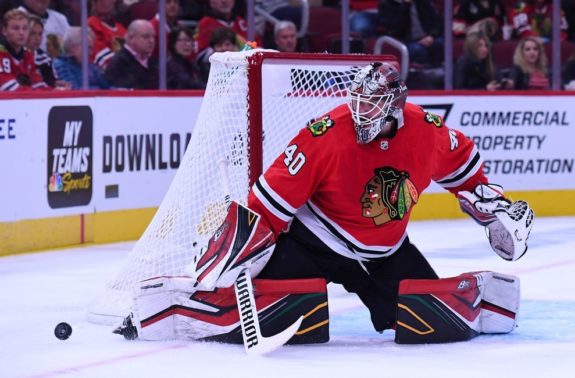
The one complication with Lehner is that his Blackhawks have worked their way back into the playoff picture after rattling off five wins in their last six games before the All-Star break. Despite a relatively pedestrian record of 24-21-6, Chicago finds themselves just three points out of a wildcard spot in a heavily congested Western Conference. And with a core of ageing stars like Patrick Kane, Jonathan Toews, and Duncan Keith who are accustomed to winning, it’s unlikely that they’ll throw in the towel until they’re clearly out of postseason contention.
That said, if the Blackhawks do trail off after the All-Star break, it’s plausible that they become sellers by the deadline. If they fail to make the playoffs it will be their third consecutive miss, and they would be smart to part with expiring assets in exchange for futures. The Maple Leafs are, of course, stacked with all kinds of young talent and Lehner himself is a pending unrestricted free agent (UFA). If the stars align before the deadline, it could be a perfect match.
Target No. 3: Jeff Petry
While I firmly believe that the Maple Leafs’ biggest issue is between the pipes (they’ve got the 18th-best save percentage at .901 since Keefe took over despite the third-best all situations expected goals mark of over 54 percent), they can always use some help on the blue line. Their needs on defence have only been magnified with injuries to Muzzin and Rielly, as players like Martin Marincin, Rasmus Sandin, and Timothy Liljegren are now being depended on to fill in the gaps, whether they’re ready or not.
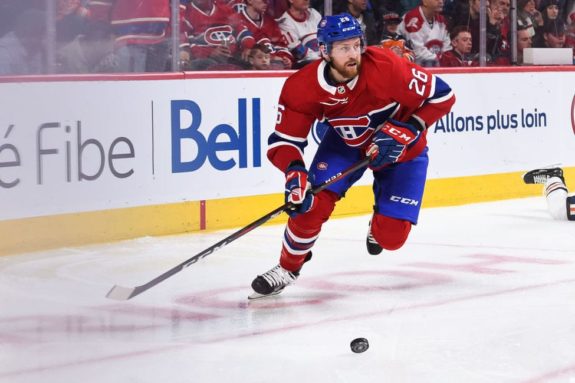
At 32, Jeff Petry is getting up there in age but clearly still has a lot left in the tank. The right-handed defenceman has 28 points in 50 games for the Montreal Canadiens this season while logging over 23 minutes a night. His steady two-way play is exactly what the Maple Leafs need to take their defence to the next level.
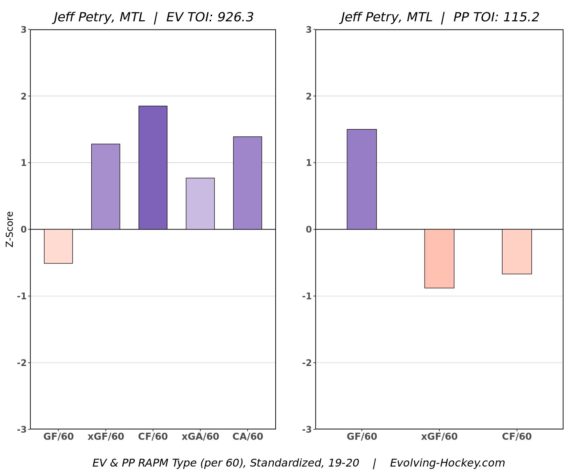
If you add Petry to the lineup, the Maple Leafs’ defence immediately looks a lot more formidable, especially once Muzzin returns:
Muzzin – Holl
Dermott – Petry
Sandin – Barrie
That’s a legitimately strong blue line that will only be fortified further with Rielly’s return leading into the playoffs. Petry also has another year left on his $5.5 million contract – a fine fit for the Maple Leafs who will have just three proven NHL defenders (Rielly, Justin Holl, and Travis Dermott) signed going into next season.
The only question will be the price, and the retooling Canadiens will likely seek a hefty package consisting of young NHL-ready players. The ask of Johnsson or Kapanen for Georgiev seems steep, but is Toronto willing to part with one of them (and more) for Petry? It’s certainly an option worth exploring.
Target No. 4: Dylan DeMelo
If the Maple Leafs don’t want to pony up for a big name like Petry, they can always opt for a lesser-known, perhaps more underrated option. Enter Dylan DeMelo.
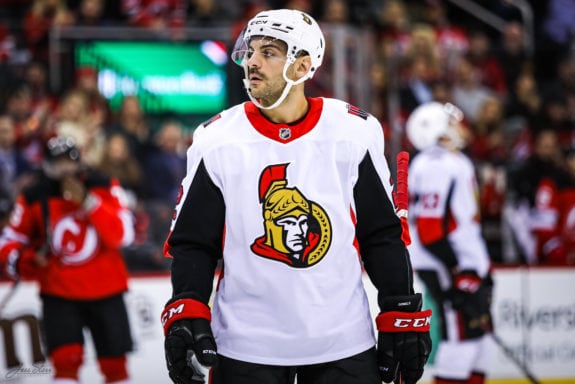
The 26-year-old London, Ont. native isn’t necessarily a household name, and his seven points this season don’t jump off the page. However, his positive impacts on the ice are undeniable. When you look at underlying numbers relative to teammates, DeMelo ranks second in Corsi for percentage (plus-7.56), first in shots for percentage (plus-8.52), and third in expected goals for percentage (plus-12.03).
Or you can look at it this way: he’s second on the Senators in plus-minus at plus-six, and one of just five players on the team that’s above even. Basically, he’s one of the few players on a very bad team that has able to keep his head above water. Now imagine how good he’d look with a better supporting cast in Toronto.
A pending UFA, DeMelo is signed for just $900,000 and would fit quite easily into the Maple Leafs’ salary cap structure for the remainder of the season. He would also provide an upgrade over someone like Cody Ceci on the third pairing. Based on past trade deadline moves, acquiring DeMelo could cost something like a mid-round pick plus a middling prospect.
Regardless of what the Maple Leafs’ front office decides to do, it’s becoming patently clear that something needs to be done to give this team an extra boost going into the home stretch. It’s imperative that they make the playoffs during this current window of contention, and adding the right piece (or two) could push them over the edge.
Stats from http://naturalstattrick.com/